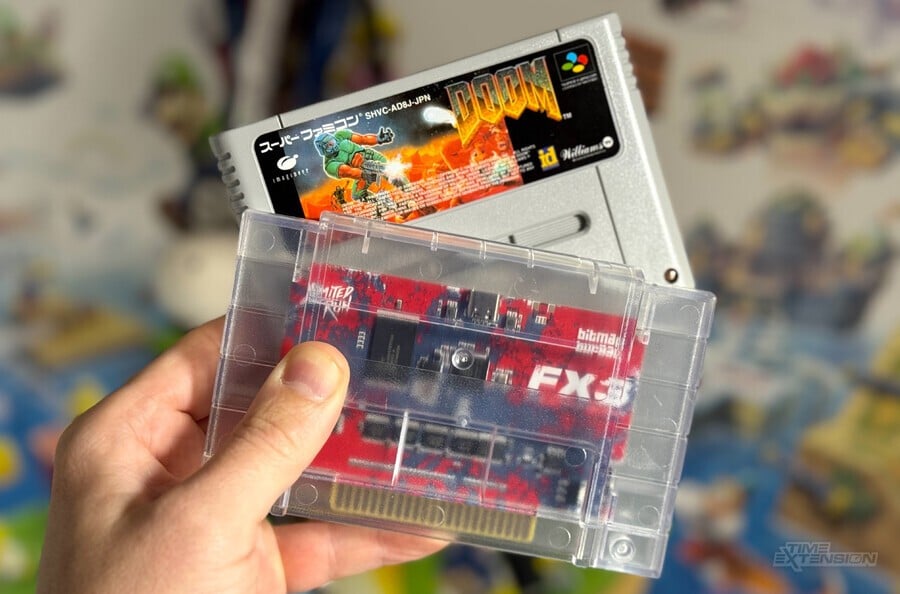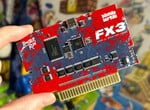
When you talk about unbelievable programming achievements, the 1995 SNES port of DOOM is right up there. id Software's FPS changed everything when it arrived on PC in 1993, and it was considered the benchmark release for many of the next-gen platforms which launched around the middle of the decade. 3DO, Jaguar, 32X, Saturn and PS1 all got ports of the game, which, at that point in time, was considered to be one of the prime reasons for investing in an expensive PC setup.
Nobody expected the SNES – a console launched in 1990, a full three years before DOOM launched on PC – to be capable of hosting a convincing conversion of id Software's iconic title, but it did so regardless, all thanks to the incredible efforts of Randy Linden, his custom "Reality" game engine and the second revision of Argonaut's Super FX chipset.
Despite being a remarkable feat, SNES DOOM was not going to go toe-to-toe with other versions of the game; the frame rate was around 10fps, making the whole thing feel very jerky and slow-paced. Cartridge space limitations also meant that quite a substantial amount of content had to be cut from the game, resulting in a title that, while technically impressive, couldn't hope to offer the full, authentic DOOM experience.
Linden isn't one to leave the past in the past, however. Late last year, it was confirmed that he would be joining forces with Limited Run Games, Bethesda, id Software and Bitmap Bureau to create an updated version of his SNES port – and I've been lucky enough to go hands-on with a pre-release version.
The headline news is that the game runs much better – almost twice the speed of the original, in fact. 20fps might not sound ideal from a modern perspective, but it's striking how much of a difference this boost makes to the SNES port of DOOM. Gameplay feels snappier and more responsive, certainly closer to the pace of the PC original.
This is only possible thanks to the development of what Linden is referring to as the unofficial 'Super FX 3' chip, which, in reality, is a Raspberry Pi RP2350 built into the cartridge itself. "Running at 150Mhz and able to emulate the Super FX chipset, this hardware allows the game to faithfully recreate the original look and feel of DOOM SNES but also offers improvements, such as a much faster frame rate," Linden tells Time Extension. "An 'ahead of time' conversion program processes the actual Super FX instruction logic and transforms it into source code which is then compiled as an executable for running on the high-speed processor."
The other significant upgrade is the reinstatement of stages that were missing from the original 1995 version, including Episode 1: Map 6, Episode 2: Map 2, Episode 2: Map 5, Episode 2: Map 7 and Episode 3: Map 5. As if this wasn't enough, the entirety of Episode 4 (Thy Flesh Consumed") is also present – that's a whopping 14 extra stages that weren't present previously, making this feel a lot more complete and definitive. On top of this, the Nightmare difficulty level – complete with respawning enemies – has been added as well.
Linden and his collaborators haven't just focused on getting extra content onto the cartridge, however – the goal was to make sure this version of DOOM plays as well as possible, too. While the 1995 version features strafing controls mapped to the L and R shoulder triggers, you couldn't 'circle' strafe, which made it hard to avoid incoming projectiles whilst keeping your gun aimed squarely at your enemy. Now, it's possible to strafe using the shoulder triggers whilst turning, and this allows you to circle around foes and keep the pressure on.
Elsewhere, level passwords are included so you can hop back into the action after a break (the 1995 release made you play through the entire game in one sitting), missing music has been reinstated, and there are FMV sequences for things like company logos when the game boots up. You can also listen to the music using the built-in player, and special 'finale' screens have been added when you beat episodes 2, 3 and 4.
Force feedback – a first for the SNES – is also part of this updated package. Limited Run Games was kind enough to send me the custom (and wired) Retro-Bit Legacy16 controller, which includes rumble motors that react to the on-screen action. This ranges from mild tremors when firing your weapon to more extreme force feedback when you're taking damage, but the most striking feature is how the pad vibrates constantly when the chainsaw weapon is sitting idle – a nice touch.
Given that we now live in the era of HD Rumble and DualSense controllers, the level of force feedback this pad delivers can hardly be considered jaw-dropping (in fact, during my first play, I didn't even realise the pad was rumbling – a consequence of this type of feature being commonplace in modern gaming systems, perhaps?), but retro-fitting it in a system which is no longer in production is impressive nonetheless, and Linden states that Limited Run is releasing the source code for free so that other SNES titles can benefit.
While Linden has worked some amazing magic here, even he can't change the fact that the hardware he's working with is 35 years old. The game still doesn't run full-screen, and there's no texture mapping on the floors or ceilings. Enemies also only face forward and don't fight one another, as they do in the original version; sprites remain quite pixelated, too, until they're close to the player.

While Limited Run Games has come under fire in recent times for some of its business practices – including shipping CD-Rs to customers and using battered GBA cartridge parts – what the company is doing with the SNES port of DOOM is pretty incredible, and certainly worthy of praise. Polishing up one of the console's most striking technological achievements is no mean feat; this goes way beyond the typical re-release process we're accustomed to seeing these days, where publishers add in fresh localisations but little in the way of gameplay or content improvements.
The only issue with this pre-production board is that it refused to work on my Analogue Super Nt and would only boot on original hardware. Linden has informed me that Limited Run is aware of the issue and is working with Analogue on a resolution, so hopefully, this won't be an issue by the time the game arrives later this year.
All in all, this updated port is an unexpected delight that gives you a real reason to dust off that SNES. This version of DOOM not only restores content that was cut due to storage limitations back in 1995, but also boosts the on-cart processing power to ensure the experience is smoother and more enjoyable.
Is it worth the 30-year wait to play an objectively worse version of DOOM than is available on modern systems? I'd say so, if only to see what Nintendo's 16-bit hardware is capable of when coaxed by the right people.


